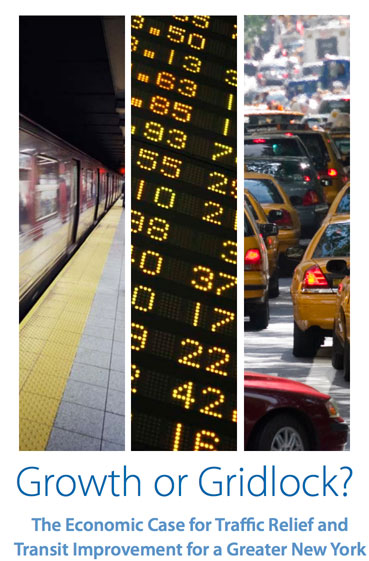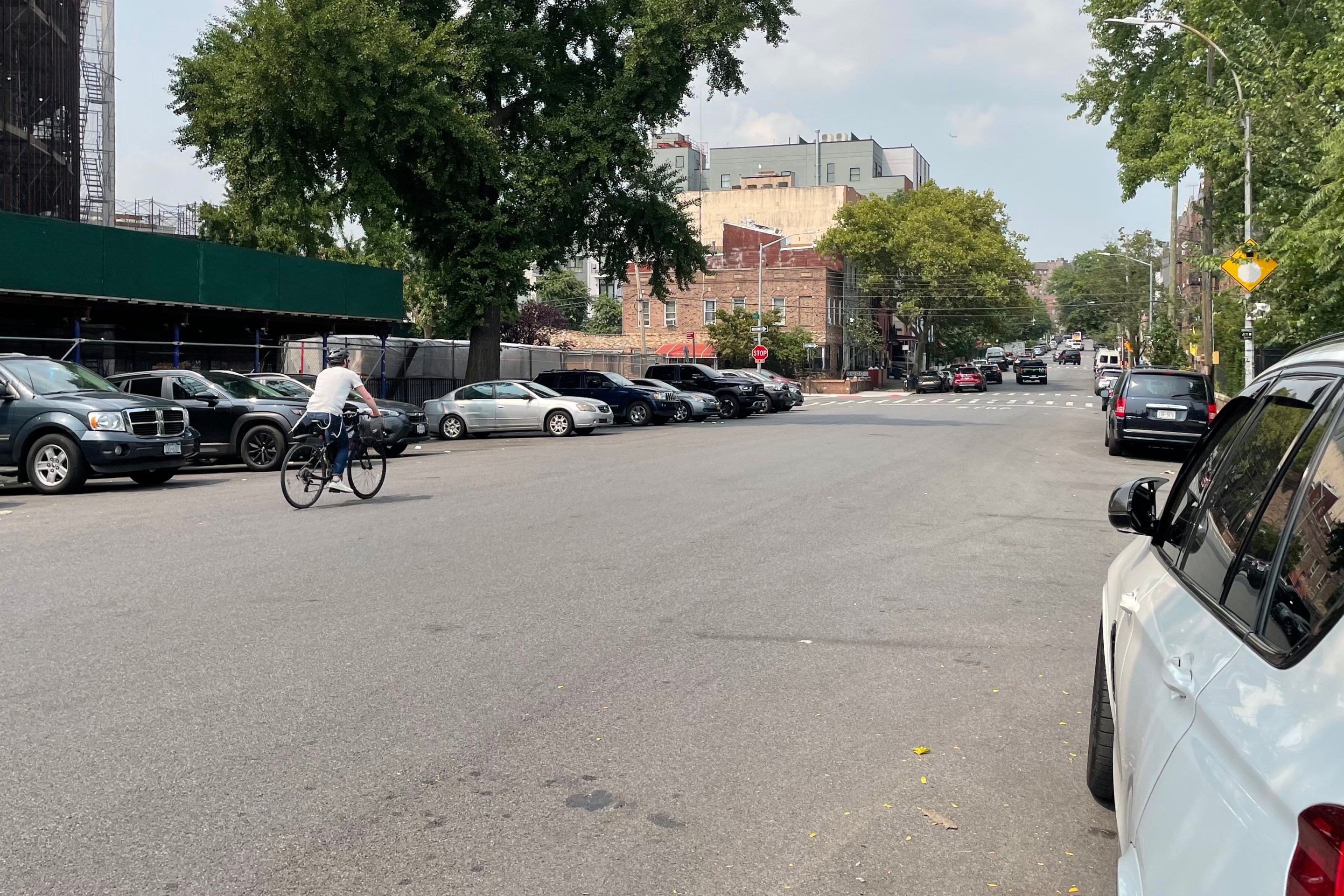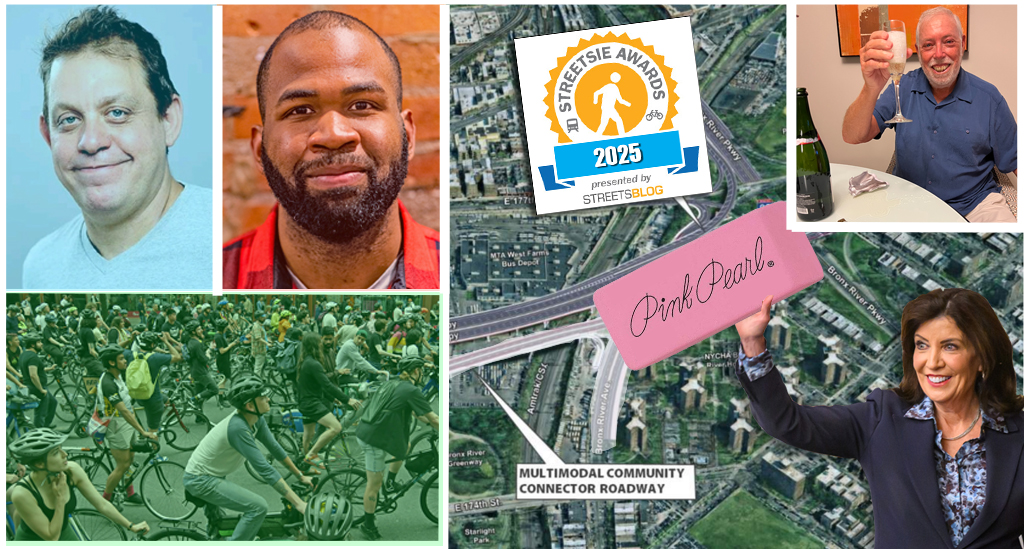During the Bloomberg era, there was no bigger backer of congestion pricing than Kathryn Wylde, director of the Partnership for New York City, a downtown business group. Wylde, a confidante of Mayor Bloomberg, spearheaded the Partnership’s 2006 Growth or Gridlock report that provided both quantitative firepower and political cover for the mayor’s congestion pricing proposal the following year. The executive summary, a powerful account of traffic congestion’s drain on city and regional job creation and business competitiveness, culminated with this admonition: “Traffic is worse every day. The time to act is now.”

So it was jarring to read Wylde’s letter in yesterday’s Times protesting that the paper “jumped the gun when it endorsed a State Assembly bill proposing traffic congestion toll pricing in New York City.” Wylde was alluding to the Times’ May 21 editorial, A Creative Way to Fix the Subway, which called the Move NY Fair Plan "a fine proposal [that] needs Mr. Cuomo" to champion it through the state legislature.
Wylde demurred, however:
Based on a review of the Move NY Fair Plan, carried out with support from the N.Y.U. Center for Urban Science and Progress, we believe that this bill [to enact the Move NY plan] is premature. Our panel concluded that more study is required to determine whether the plan would generate the net revenues projected, if economic hardships could result, and what transit investments would be required to achieve equitable results.
The dissonance between “The time to act is now” in 2006 and “this bill is premature” in 2016 is striking. True, a decade separates the two statements, and a lot has changed. Traffic in Manhattan’s Central Business District is perhaps a tad more manageable, and policy wonkery no longer rules City Hall. But even if the annual cost of traffic congestion here has fallen back a bit from the staggering $13 billion figure emblazoned in “Growth or Gridlock,” its toll on economic activity and the quality of life remains high.
Indeed, gridlock has metastasized from the streets and bridges to the subways, underscoring the need for the transit improvements that the congestion fees could finance. In that light, quibbling over whether Move NY will yield three times as much new net revenue as Bloomberg’s congestion plan, or merely double, seems like a distraction.
At this point I should mention that as the architect of the traffic-pricing model underlying Move NY’s revenue and other projections, I was personally taken aback by the skeptical tone in Wylde’s letter and the Partnership’s review. And though I’m an economic consultant to Move NY I don’t represent or speak on behalf of the MNY team or coalition.
Wylde says in her letter that the Move NY plan and bill “rely on assumptions that have not been thoroughly vetted by transportation agencies or other independent experts.” But those assumptions have been made explicit and transparent for years, in the “Balanced Transportation Analyzer” (BTA) spreadsheet I began developing in 2007 and have continually expanded and updated in the public domain.
To be sure, the assumptions in the BTA run well into the hundreds, befitting the intricacies of New York’s vast transportation ecosystem. But all of them are tweakable. Does Move NY overshoot the mark in projecting that 97 to 98 of every 100 vehicles passing through the CBD entry points will actually pay the toll? Then slide that parameter downward and observe -- in seconds -- how the net revenue shrinks. Does the BTA overstate the tendency of motorists to continue driving to the CBD in the face of the new toll? Simply bump up the model’s “price elasticity” and watch the revenues go down, though the decrease will be partially offset by added bus ridership as the drop in traffic shortens bus travel times.
There’s no indication that the Partnership’s panel performed such "sensitivity analysis," even though any of the team’s six transportation academics, two NYC DOT staffers, and four outside consultants are more than intellectually equipped to do so.
The panel’s report makes some fair points, especially on the need to synch the transit investments to the influx of people who will cease driving after their car trips have been “priced off” the roads. But both the report and Wylde’s letter understate the urgency propelling the Move NY plan, as if the present situation -- marked by bridge-shopping, toll inequity, and the incipient immobilizing of both streets and subways -- is manageable.
“A proposal of this magnitude deserves independent analysis and public scrutiny before it becomes law,” Wylde’s letter concludes. Yet the basic contours of the Move NY plan and the underlying traffic and revenue model have been in the public domain for five full years, giving the Partnership plenty of time to enhance it.
Nearly a decade passed between windows of opportunity to enact traffic-reducing, transit-improving road pricing reforms in New York City. If elected officials don't act now, it may be another decade before the city gets another chance. Suggesting further delay isn’t just disingenuous, it’s a misstep New York can ill afford.





